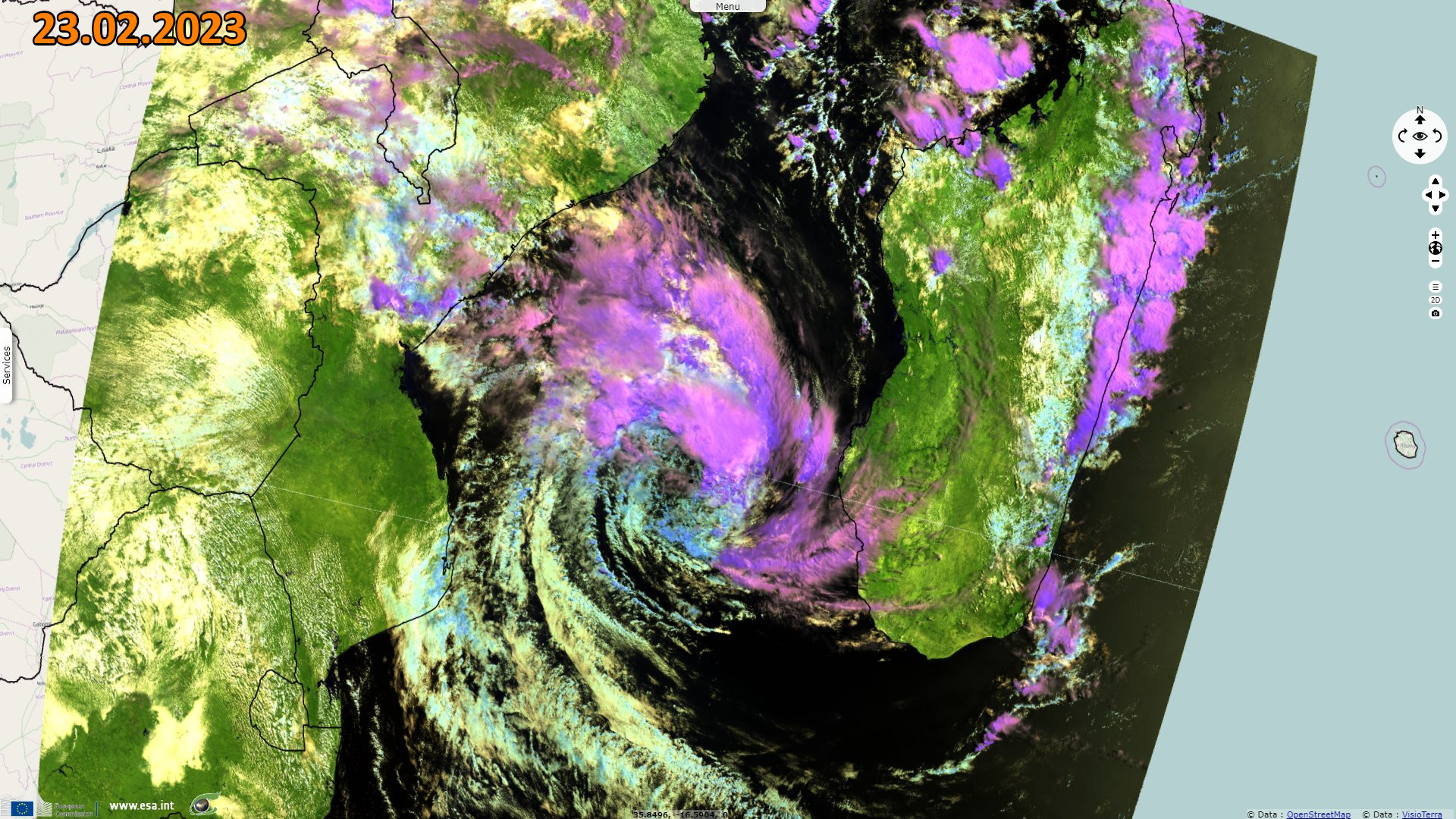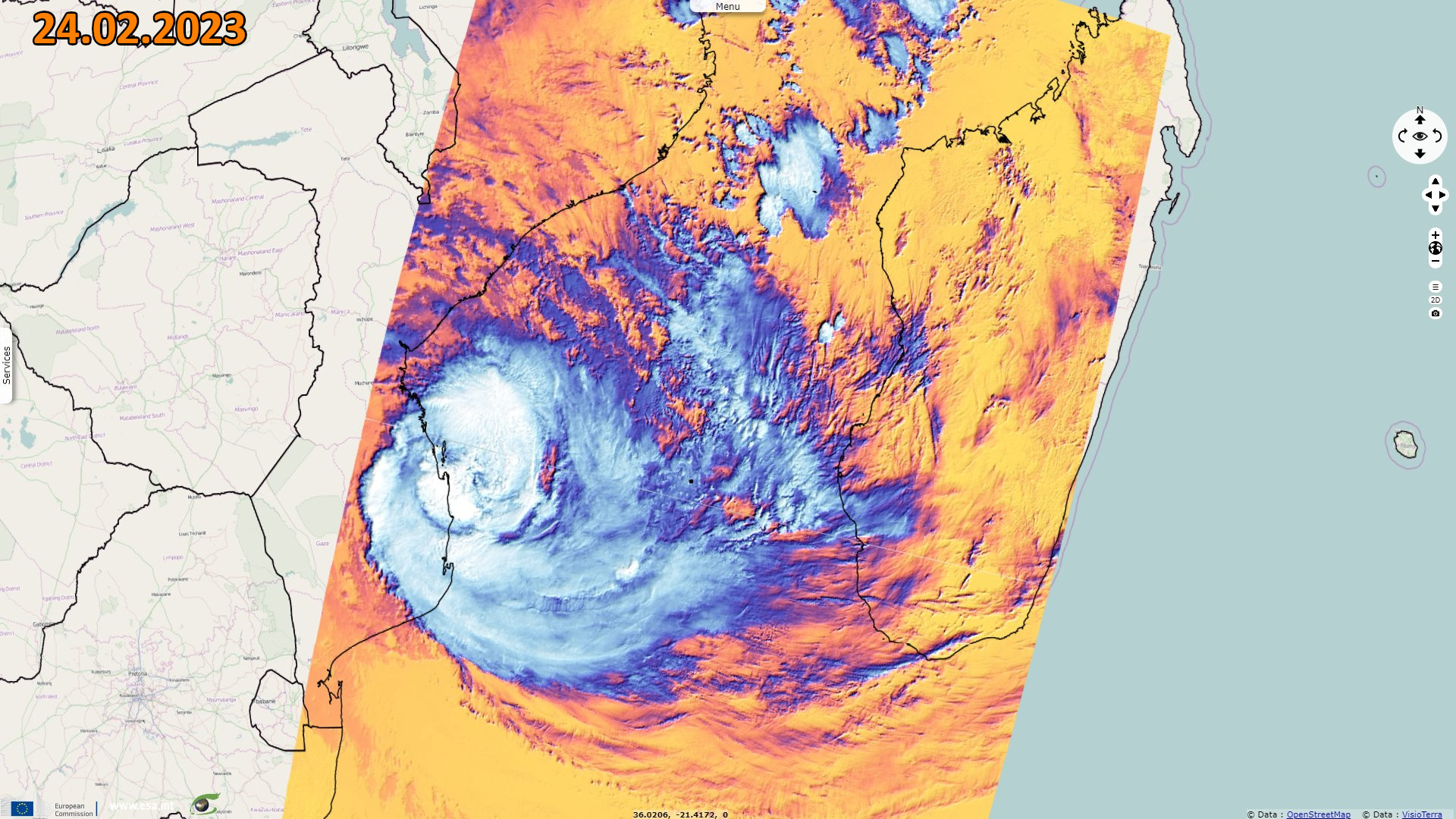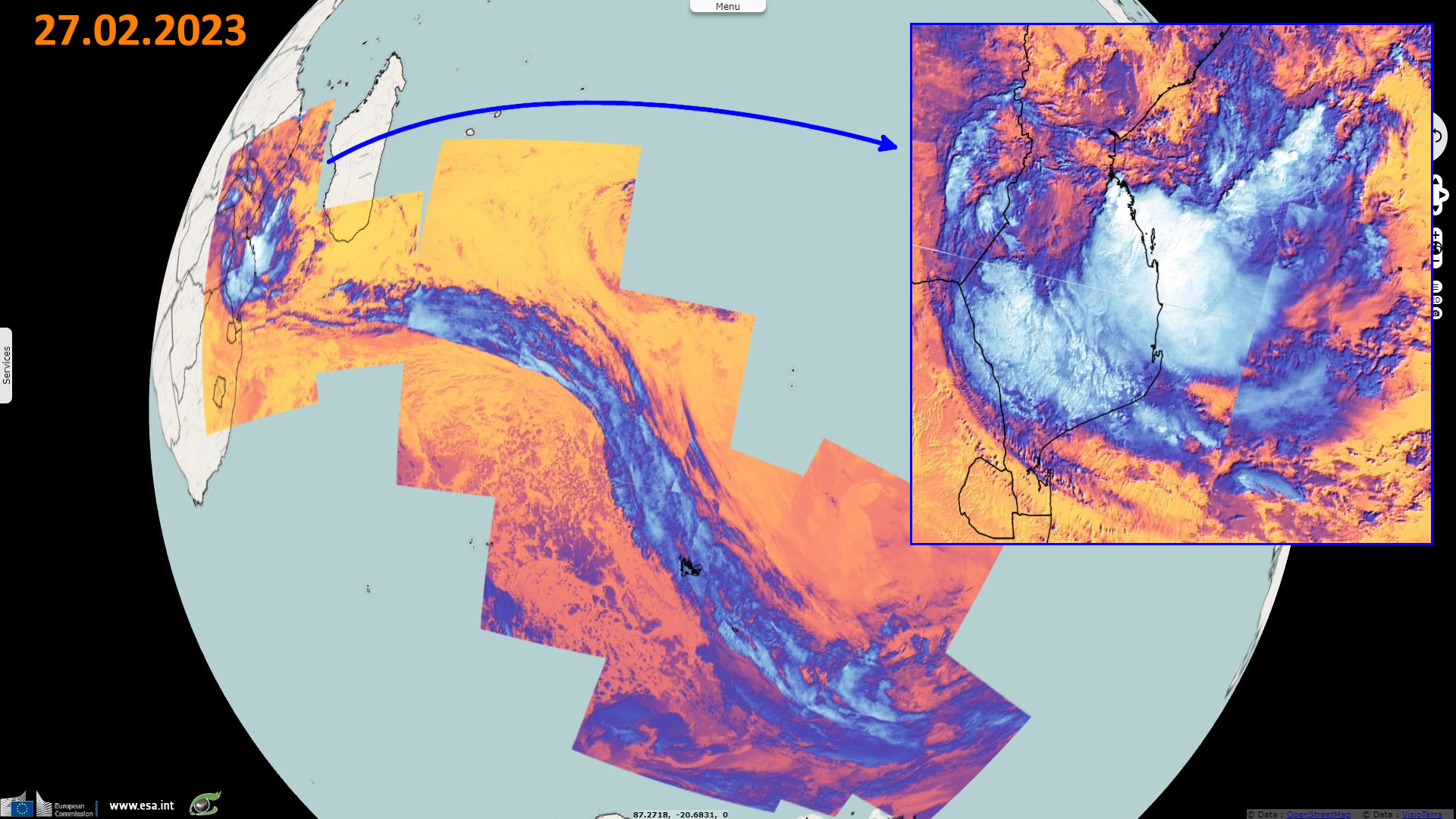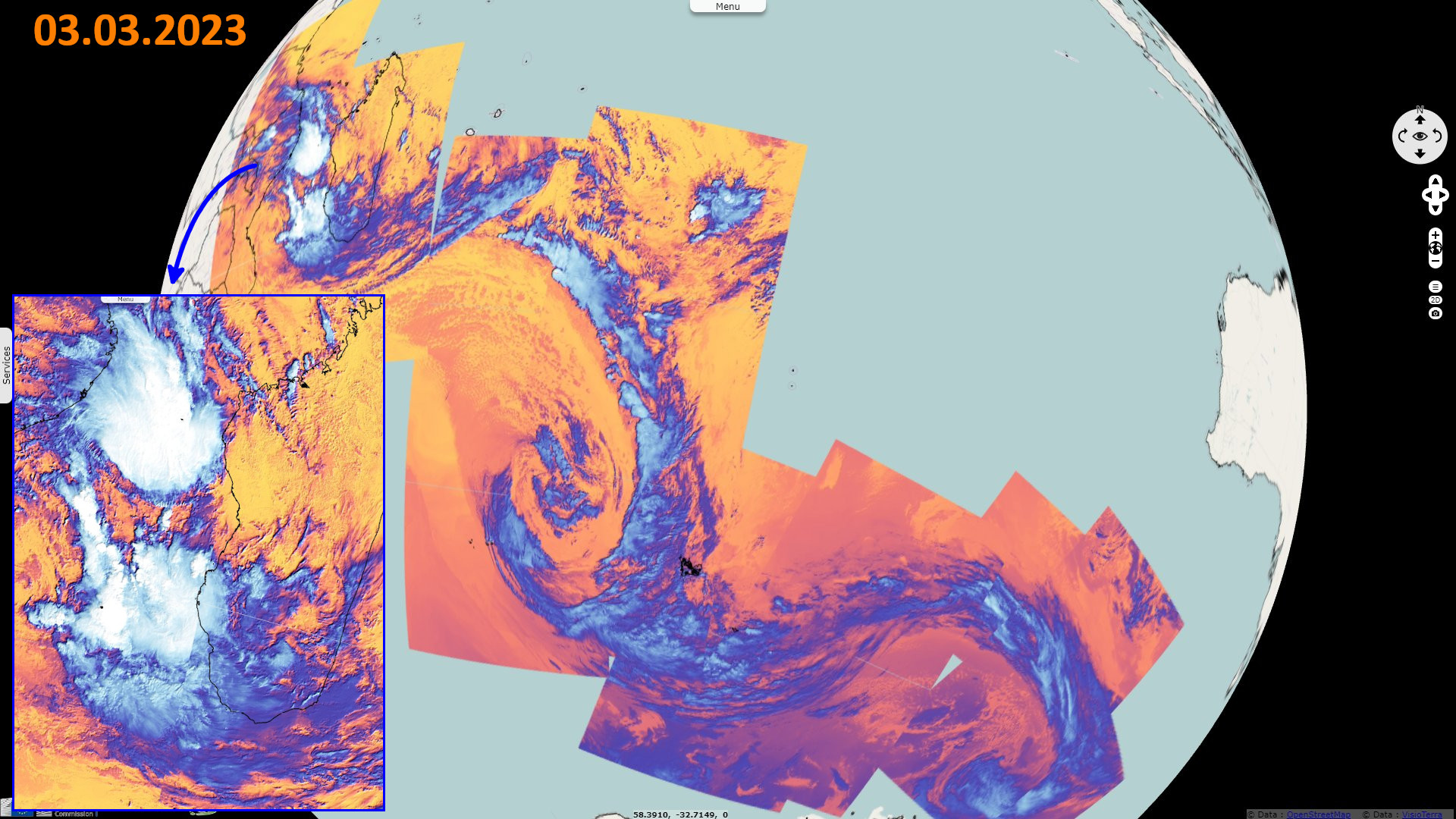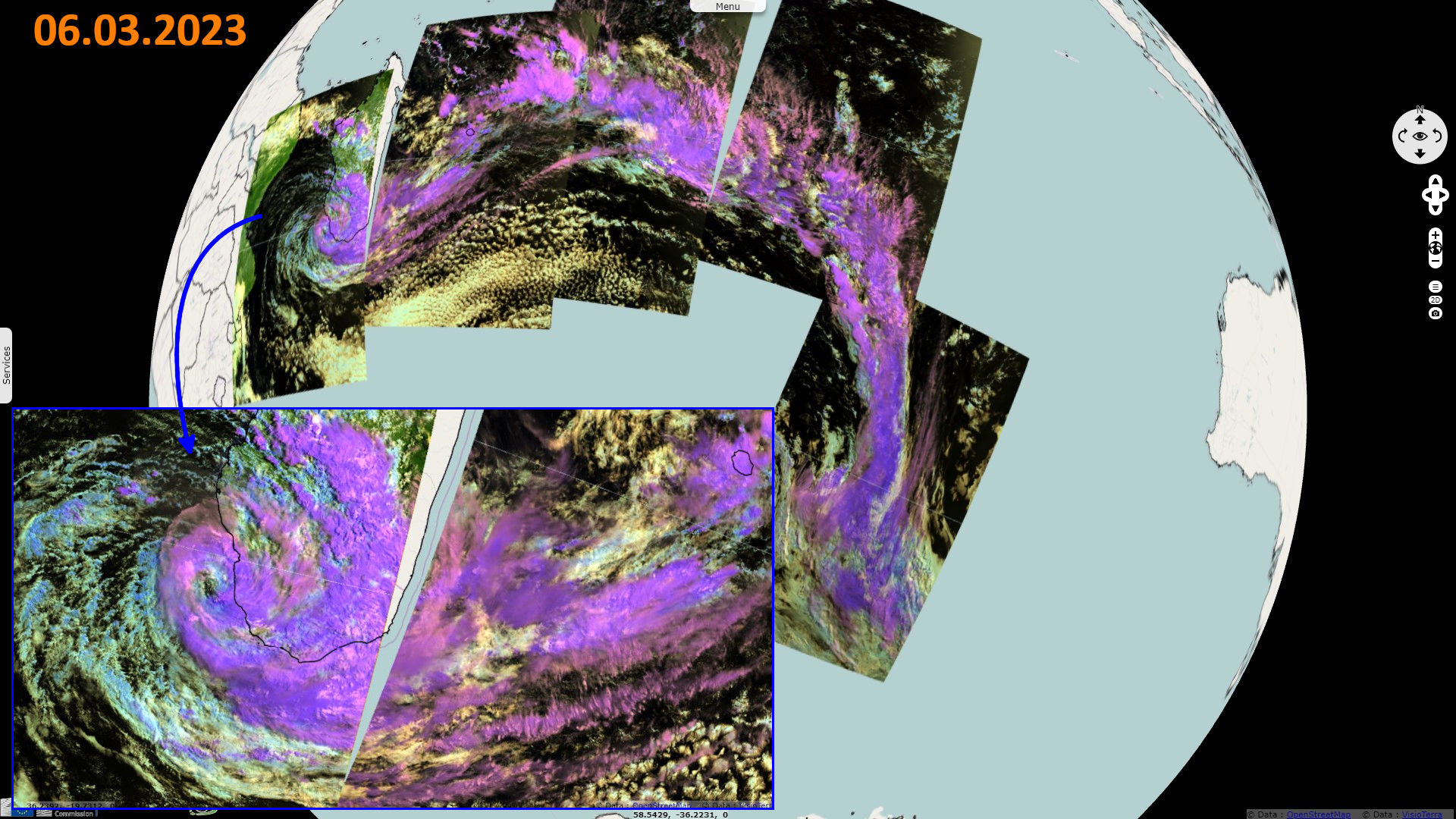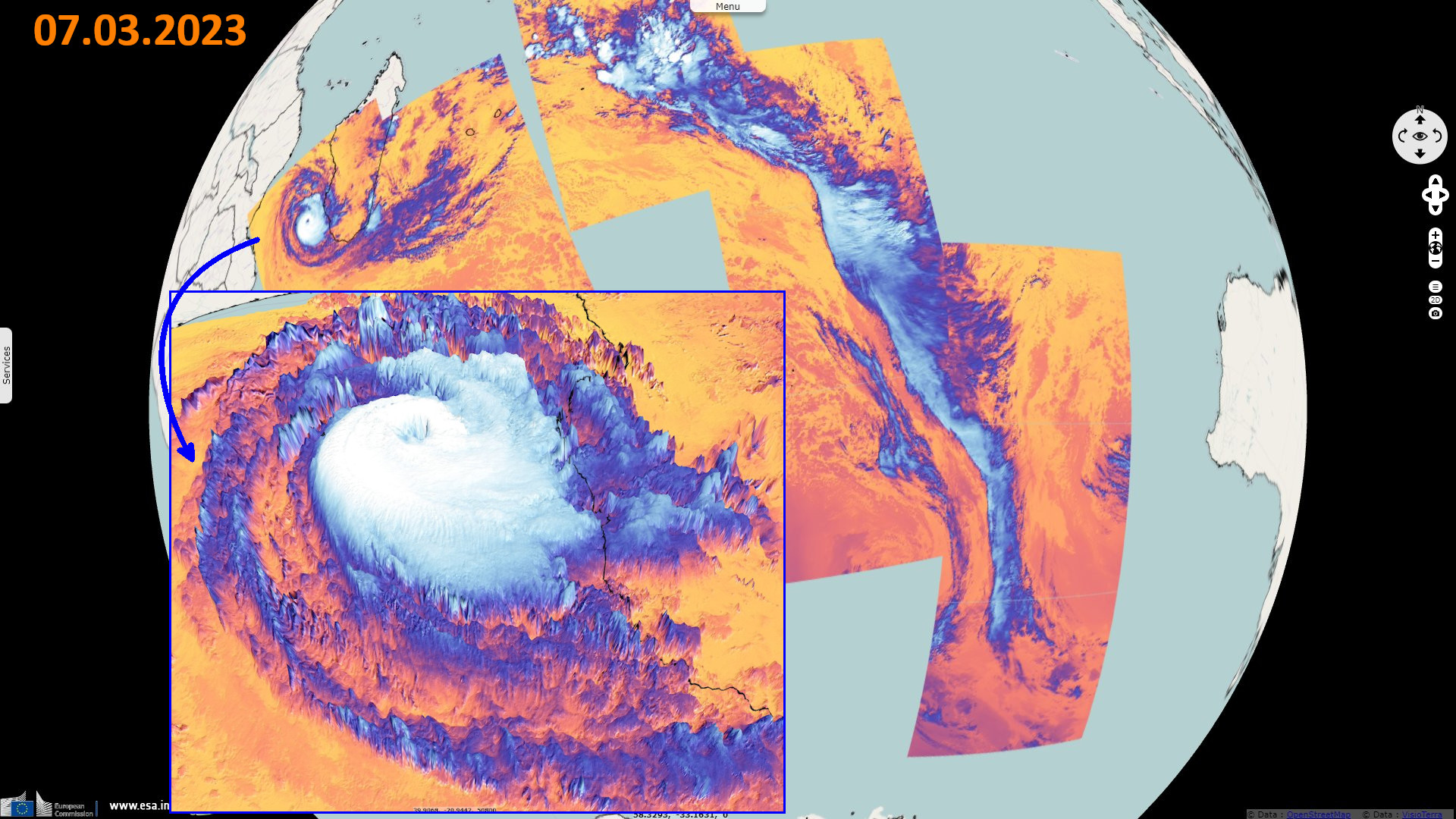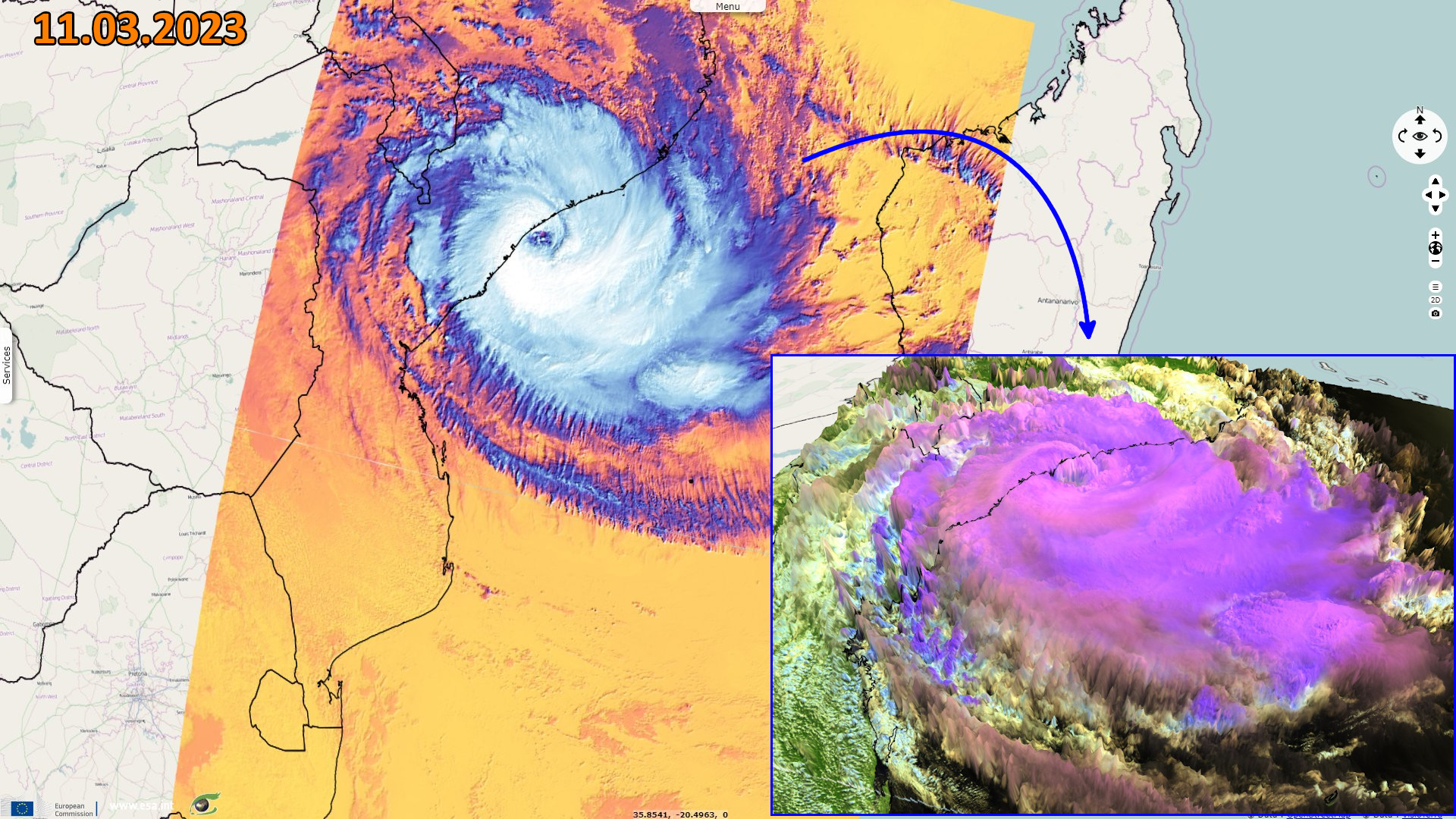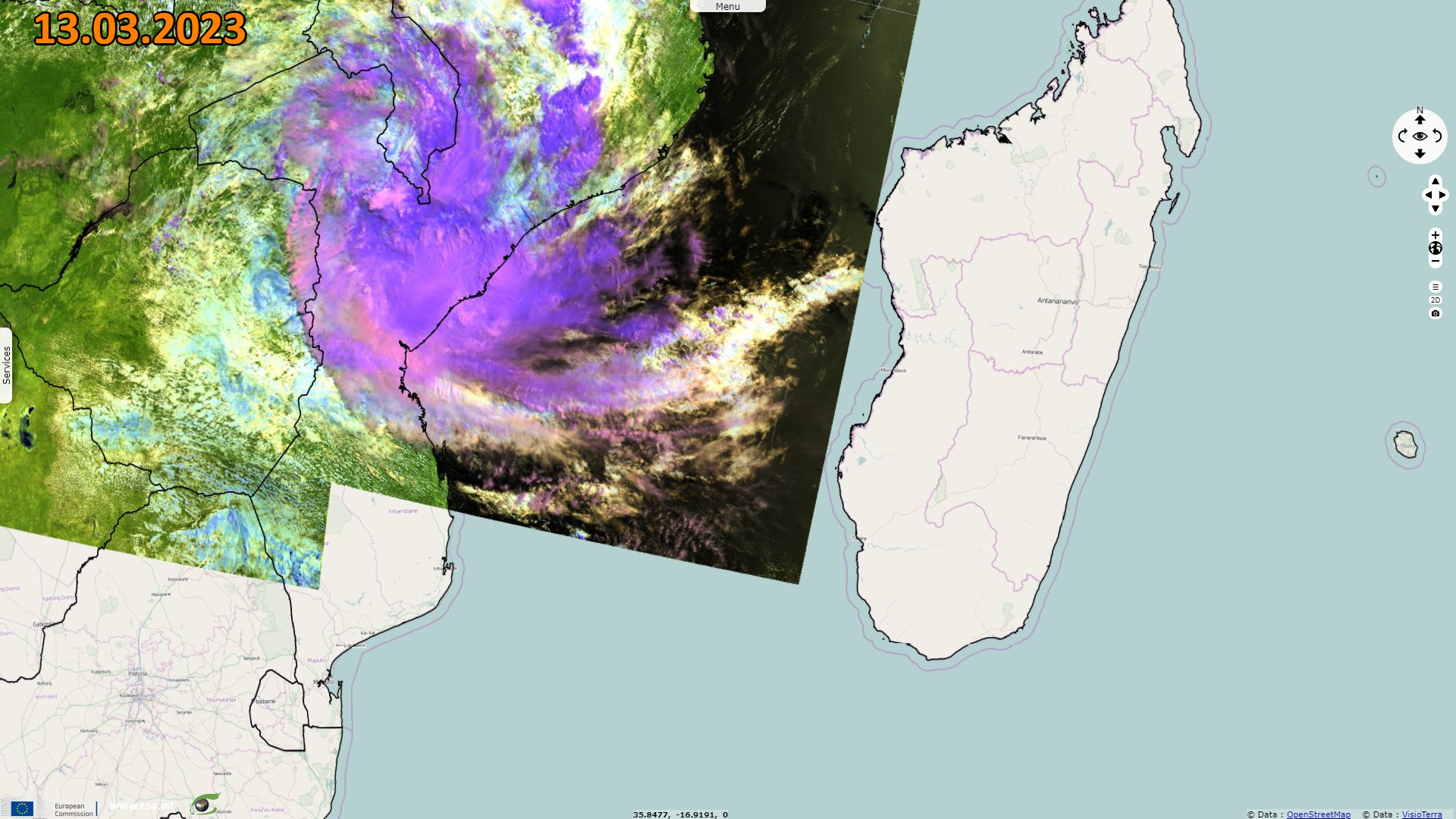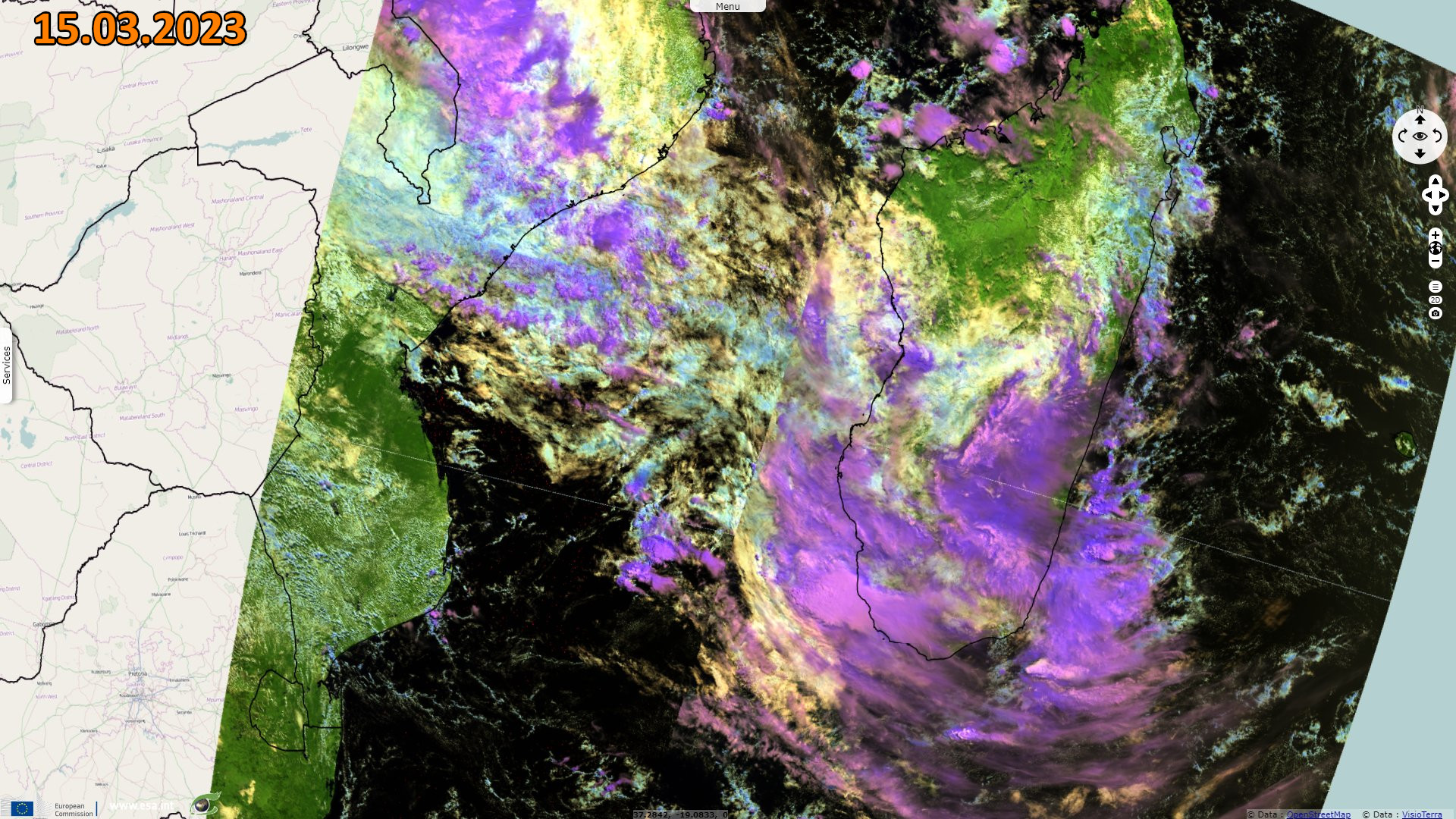Cyclone Freddy alternates deadly landfalls and strengthening episodes in the Mozambique Channel
Sentinel-3 SLSTR RBT acquired on 22 February 2023 from 19:29:37 to 19:32:37 UTC
...
Sentinel-1 CSAR IW acquired on 10 March 2023 at 03:17:18 UTC
Sentinel-3 SLSTR RBT acquired on 15 March 2023 from 06:18:48 to 07:00:56 UTC
Sentinel-2 MSI acquired on 19 March 2023 at 07:36:21 UTC
...
Sentinel-1 CSAR IW acquired on 10 March 2023 at 03:17:18 UTC
Sentinel-3 SLSTR RBT acquired on 15 March 2023 from 06:18:48 to 07:00:56 UTC
Sentinel-2 MSI acquired on 19 March 2023 at 07:36:21 UTC
Keyword(s): Emergency, natural disaster, climate change, health, rain, precipitation, Mozambique, Malawi, Madagascar
Cyclone Freddy first made landfall on Madagascar on 21 February 2023 and lost its structure, being re-classified as an overland depression with sustained winds of 110 km/h. At the time, it was already the longest-lived cyclone on record. It was then the only known tropical cyclone to have achieved four separate rapid intensification cycles and held the record for the all-time highest accumulated cyclone energy of a tropical cyclone in the Southern hemisphere.
Freddy re-strengthened in the Mozambique Channel, marking its intensification into a severe tropical storm. Freddy had made its second landfall in Mozambique south of Vilankulos, with 10-sustained winds of 85 km/h. Freddy rapidly weakened to an overland depression as it moved inland.
Freddy turned south-west toward the sea. During March 7th, Freddy had become a tropical cyclone with sustained winds of 130 km/h, it showed a well-defined eye visible on satellite imagery. It crossed the Mozambique Channel and reached Madagascar again after a cyclonic eye had formed.
Again, the cyclone weakened and moved west toward Mozambique and Malawi. Freddy stalled over the Mozambique channel, intensified and regained strength as it barreled toward land. Freddy made landfall with maximum wind speeds at sea measuring 155 kilometers an hour and sea gusts averaging 220 kilometers an hour, Météo-France said.
The Hill reported: "The cyclone’s second punch in Mozambique was showering a low-lying, vast land teeming with rivers and 'almost all of them have no dam' to ease flooding, said Salomao Bandeira, a scientist at Mozambique’s Universidade Eduardo Mondlane."
Matthew Cappucci detailed the record beaten by Cyclone Freddy in The Washington Post:
It has lasted from 4 February to 14 March, "On March 7, it became the longest-lived tropical cyclone ever recorded" after traversing more than 8000 kilometres in the southern Indian Ocean. That eclipses the previous world record-holder, Hurricane John, which spent 31 days as a named Pacific storm between Aug. 11 and Sept. 13, 1994.
"Freddy has rapidly intensified an unprecedented seven times, compared with the previous record, which was four times. Rapid intensification describes a jump of 35 mph or greater in a storm’s winds in 24 hours or less. While most major hurricanes and storms do rapidly intensify at least once, anything more than three times in a storm’s life cycle is exceptional.
Now it’s shattered the record for the planet’s most energetic storm." Owing to these additional intensification cycles, Freddy became also the highest-accumulated energy-producing tropical cyclone ever recorded worldwide.
ReliefWeb published the following impact on Mozambique:
"Rainfall brought by Freddy reached more than 600mm in some places. This precipitation is four times greater than the average monthly precipitation during the rainy season."
"Satellite imagery shows flooding in Zambezia, Tete, Sofala, Inhambane, Gaza and Maputo provinces. In Zambezia, water levels in areas surrounding the Licungo and Zambezi basins are still rising as of 16 March, C. The Zambezi river remains above alert levels, with a high risk of additional flooding."
"According to latest data from the National Institute for Disaster Risk Management (INGD), Freddy’s second landfall affected some 253,466 people across Zambezia, Sofala, Tete, Manica and Niassa. This in addition to the 239,000 people affected by floods and Freddy’s first landfall." "In terms of damage, some 48,134 houses were partially or totally destroyed while some 191,562 hectares were damaged and an additional 38,000 hectares have been lost."
"Heavy rains and flooding are a concern as the cholera outbreak continues to spread. As of 15 March, the cumulative number of cholera cases stood at 8,877 cases and 54 deaths across 33 districts."
"Cyclone Freddy made landfall in Malawi’s Southern Region on 12 March, near the city of Nsanje, bringing torrential rainfall and strong winds that caused landslides and flooding.
Nearly 490,100 people are displaced and sheltering in over 500 sites across flood-affected areas of Malawi, as communities begin to reckon with the damage wrought by the Tropical Cyclone Freddy weather system.
The death toll has risen to 476, with at least 349 people still missing, according to authorities on 19 March. There is a risk of an increase in cholera cases as the health system is already weakened, and water infrastructure is damaged due to flooding and landslides."
